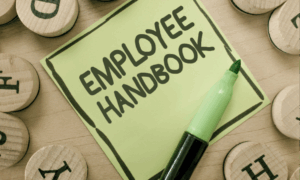Many small businesses must rely on payroll-protection loans to keep workers on board during the coronavirus pandemic-and they need to carefully plan and track their spending if they intend to apply for loan forgiveness.
Under the $2.2 trillion Coronavirus Aid, Relief and Economic Security (CARES) Act, Congress allocated $349 billion to the Paycheck Protection Program (PPP) to help small businesses keep workers on their payrolls. The fund was depleted in less than two weeks, so lawmakers added more than $300 billion (www.shrm.org/resourcesandtoo/llsegal-and-compliance/employment-law/pages/house• approves-small•business-coronavirus-relief.aspx).
A covered small business may qualify for a loan of up to 2.5 times its average monthly payroll costs-up to a maximum of $10 million . The
U.S. Small Business Administration (SBA), which is administering the program, will forgive loans if:
- The loan proceeds are used to cover payroll costs, as well as most mortgage interest, rent andutility costs over the eight-week period after the loan is made.
- Employee headcount and pay levels are maintained.
The eight-week period begins on the date the lender makes the initial distribution to the business.
- Remember that the intent is to keep people on payroll and to support the ongoing operations of your business,” said Patrick Dennison, an attorney with Fisher Phillips in Pittsburgh . Employers should take a conservative approach while keeping the intent of the loan program in mind, he suggested.
Here’s what employers need to know about loan forgiveness under the program.
Payroll Costs
“Small businesses and eligible nonprofit organizations, veterans organizations, and tribal businesses described in the Small Business Act. as well as individuals who are self-employed or are independent contractors, are eligible if they also meet program size standards,” according to the SBA.
Most businesses are only eligible if they employ fewer than 500 employees. However, businesses that employ more than 500 workers may be eligible if they meet the SBA’s size standards (https://www.sba.gov/documenVsupport- table-size-standards) for their industry.
“The SBA has been very clear on the uses of the PPP loans that are forgivable,” observed Jonathan Forgang, an attorney with Alston & Bird in Los Angeles. Borrowers are required to spend at least 75 percent of the loan proceeds on payroll costs. Employers need to monitor their expenditures during the first eight weeks after the PPP loan is originated, he noted, to ensure that no more than 25 percent of the loan proceeds are spent on nonpayroll costs such as rent, mortgage Interest and utilities payments.
Payroll costs include:
- Salary, wages. commissions and tips- up to $100,000 annualized for each employee.
- Employee benefits, including paid leave, severance pay, insurance premiums and retirement benefit.
- State and local taxes assessed on pay.
- Payroll costs for sole proprietors and independent contractors include wages, commissions, income or net earnings from self employment (up to $100,000 annualized).
Although payroll costs include paid sick leave, employers should note that paid-sick leave and paid-family leave payments made under the Families First Coronavirus Response Act (www.shrm.org/ResourcesAndTools/legal-and-compliance/employment-law/pages/ dol-issues guidance-on-coronavirus-paid-leave-mandate.aspx) (FFCRA) are excluded because reimbursement for those mandates will be provided through tax credits. Compensation is also excluded for any employee whose principal place of residence is outside the U.S.
The SBA explained that payroll costs are calculated on a gross basis without considering federal taxes, such as the employee’s and employer’s share of Federal Insurance Contributions Act (FICA) and income taxes that are required to be withheld from employees.
“As a result, payroll costs are not reduced by taxes imposed on an employee and required to be withheld by the employer,but payroll costs do not include the employer’s share of payroll tax,” the SBA said. The administration provided the following example:
If an employee earned $4,000 a month in gross wages and $500 was withheld for federal taxes, then the total $4,000 would count as payroll costs. The employee would receive $3,500, and $500 would be paid to the federal government. However, the employer’s federal payroll tax obligation for the $4,000 in wages is excluded from payroll costs under the statute.
“The spirit and overarching intent of the bill is to either keep people working or bring them back to work,” said Stephanie O’Rourk. a partner advisory, assurance and tax firm CohnReznick in Atlanta.
The SBA explained that the forgivable amount will be reduced if an employer:
- Decreases its full-time employee headcount.
- Cuts salaries and wages by more than 25 percent for any employee who made less than $100.000 (annualized) during all pay periods in 2019.
Employers can choose to compare workforce reductions during the eight-week loan period with the average number of employees on staff from either:
- Feb. 15, 2019, to June 30, 2019.
- Jan. 1, 2020, to Feb. 29, 2020.
So if a business employed 20 workers during the comparison period and only 10 workers during the loan period, the forgivable amount would be reduced by 50 percent. O’Rourk explained. “There is a cure period.” she noted.
EMPLOYERS WHO MADE REDUCTIONS BETWEEN FEB. 15, 20 20 , AND APRIL 26 , 2020 , HAVE UNTIL JUNE 30, 2020 , TO RESTORE THEIR FULL-TIME EMPLOYMENT AND SALARY LEVELS TO QUALIFY.
“An employer could theoretically hire back its employees for one day, June 30, in order to fall under this exception.” Forgang said. “However, Treasury Secretary Steven Mnuchin has had strong words for any employers attempting to take advantagao f the PPP loan program in a manner that goes against the intent of the law.”
The U.S. Treasury Department is periodically updating its FAQ list (https://home.treasury.go/vsystem/files/136/Paycheck-Protection-Program Frequently-Asked-Questions .pdf) to answer more nuanced questions.
Record-Keeping
Employer s should diligently monitor their expenditures during the eight-week period after the loan Is funded to be sure that no more than 25 percent of the PPP loan proceeds are spent on nonpayroll costs such as rent. mortgage interest or utilities payments, Forgang said.
Pete lsberg, vice president of government affairs at payroll and HR services firm ADP, suggested that employers open a separate account to be very clear about how the funds are used.
Employers will ultimately have to submit a forgiveness request to the lender along with documents that verify the number of full-time equivalent employees and pay rates and payments on eligible expenses.






